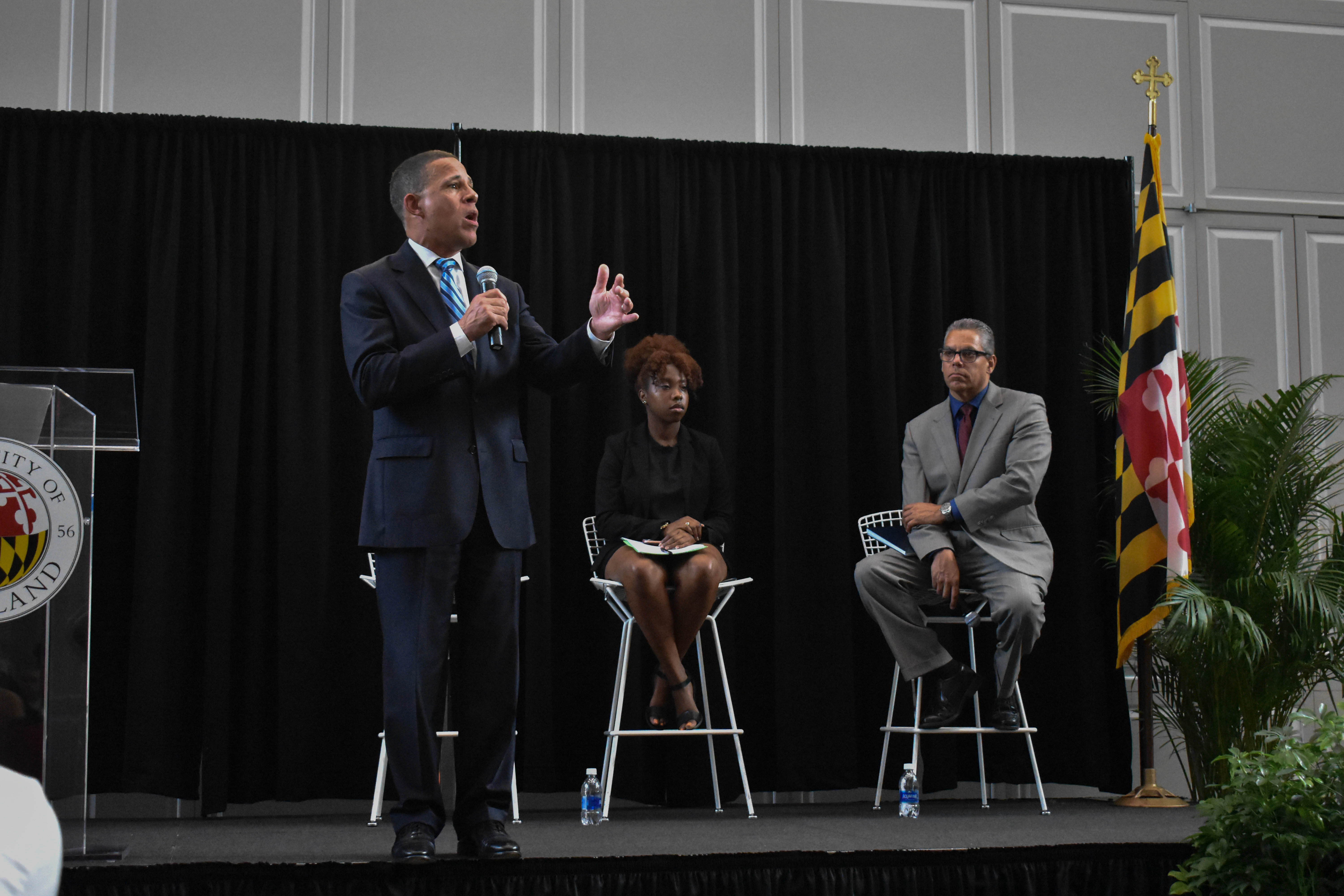Views expressed in opinion columns are the author’s own.
Colleges have long tried to walk the line between protecting marginalized students and protecting all students’ First Amendment rights. The First Amendment protects citizens’ freedom to express all opinions, regardless of homophobic, misogynistic or racist content. However, it does not protect speech used to encroach upon or desecrate private property.
On Oct. 2, an incident occurred in Anne Arundel Hall in which a student wrote “REEEEE” on another student’s whiteboard, which had the definition of homophobia written on it. This term is primarily problematic because it’s both ableist and homophobic in this context, and because it created a hostile environment for the student.
[Read more: UMD Police say a derogatory phrase on a student’s whiteboard isn’t a hate bias incident ]
“REEEEE,” mocks the sound a person with autism may make when they experience sensory overload, according to the Southern Poverty Law Center. “REEEEE” also describes the sound Pepe the Frog, a meme that has been adopted by white nationalists to attack people online, makes when he is angry or enraged.
By writing “REEEEE” over the definition of homophobia, the individual was expressing outrage at a student’s attempts to make his dorm more inclusive. While it is acceptable, although wrong, to express a homophobic opinion, the student responsible for this vandalism expressed his opinion by encroaching upon another student’s property. This is not legally protected speech, whereas the white nationalist symbol he drew on his own whiteboard is within his rights.
A university can not and should not violate students’ right to free expression, and, as unlikely as it seems, having experiences with hateful people can be important for those of us who are marginalized. While it can be shocking and alarming to realize there are bigoted people living so close to us, it’s not right to give students the illusion that bigoted people don’t exist in our own generation.
Last week, the University of Maryland Senate discussed a proposal to prohibit hate symbols on all campus facilities. This plan would prohibit drawing hate symbols on university property as well as displaying hate symbols anywhere on the campus. This is a violation of the First Amendment and would prohibit students’ freedom of expression.
It must be made clear, however, that drawing a swastika on your own property is not the same as drawing one on, say, a Jewish person’s whiteboard. Defacing someone else’s property is a crime, so long as the person alerts the authorities. For that reason, writing “REEEEE” on a classmate’s whiteboard isn’t constitutionally protected, while wearing a shirt bearing the phrase is permitted.
It can be incredibly painful to hear the opinions of homophobic, racist and sexist people, but to pretend those people’s opinions do not exist is more damaging in the long run. While seeing hate symbols will create a hostile environment for marginalized people, this hostility is something we will likely face in the workforce or even in our neighborhoods. Going through college with no knowledge of how to cope with hateful people will only lead to trauma later in life.
Ideally, a university should function as a land of mutual tolerance, where bigoted people are free to protest, voice their thoughts and write opinion columns. Meanwhile, the rest of us should be able to express our identities without fear of violence and without those opinions being forced upon us. If universities restricted hate-speech, then this utopia of free exchange couldn’t exist. In fact, restricting hate speech would likely cause bigoted people to lash out even further against minorities.
Either the Department of Resident Life or the Office of Student Misconduct should take action against the student who expressed his opinions through vandalism. He should face consequences, such as having to apologize publicly to the victim of his vandalism or being put on probation by Resident Life. Whatever happens, this incident should not be taken lightly — it was not the student’s hateful opinion, but the way he expressed it that should be punished.
Now, of course, not every student who draws on another’s whiteboard deserves university sanction. Since his vandalism offended the owner, and the owner wanted the incident reported, the content of his vandalism also played a role in why the student should be punished. If Logan Dechter hadn’t considered the content offensive enough to report, then the vandalism would have gone unpunished.
With the influx of hate bias-related incidents on our campus, this university needs to be clearer about what does and does not constitute free speech. From the noose found in a fraternity house to the man who spray-painted a swastika on a campus trash cart, free speech does have its limitations. Vandalism, violence and threats are not an acceptable way of using your freedom of speech, and this university should make an example of those who do. At the same time, this university must also avoid letting these incidents give rise to policies that violate students’ rights.
Liyanga de Silva is a sophomore English major. She can be reached at liyanga.a.ds@gmail.com.



